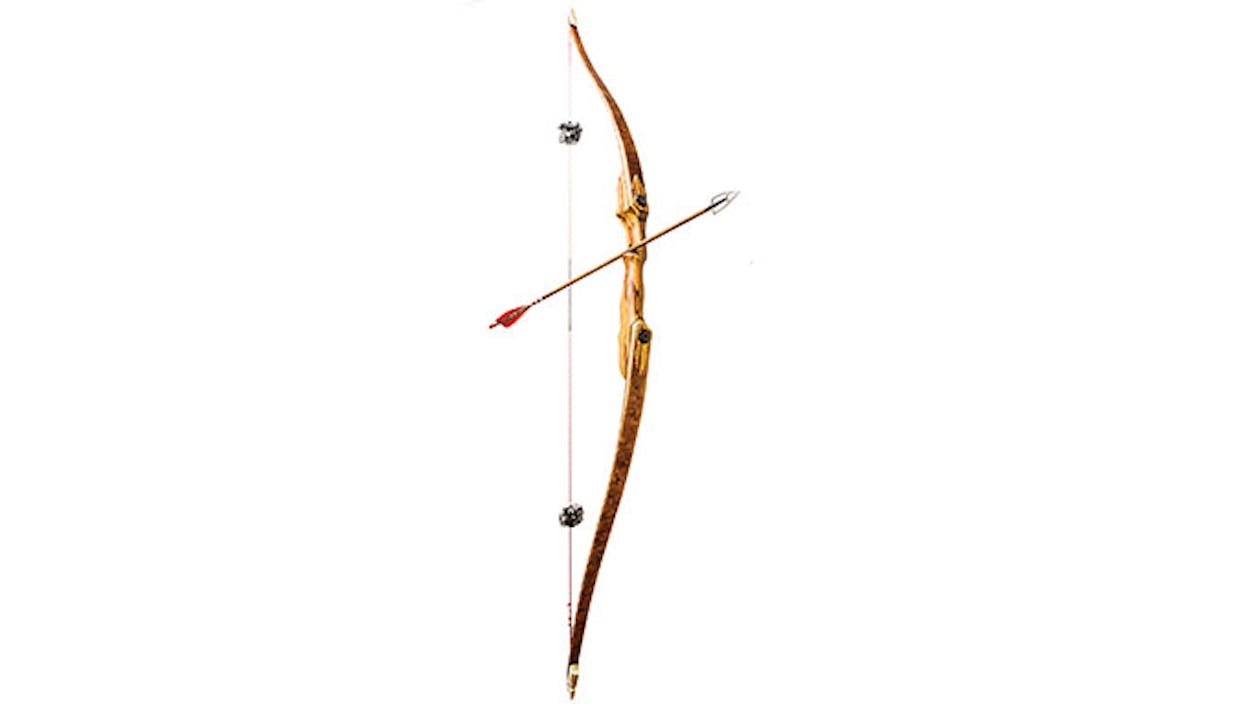The 750- square-foot shop behind Bob Sarrels’s Manchaca home is a bow hunter’s dream. A shoulder mount of Peaches, a 275-pound wild hog—and the star of Sarrels’s most thrilling hunting story—presides over his desk. Rows of traditional bows, handmade from exotic woods like cocobolo, pau ferro, and Osage orange, line the walls of his small office. As Clint Black’s “Killin’ Time” plays on the radio, a friend (and fellow bow maker) drops by to use the shop’s band saw. When he leaves, a peach grower from Stonewall walks in to make a purchase. Sarrels, an avid outdoorsman, spent more than three decades building and upholstering furniture before he began making bows, in 1997. Eleven years later he left the furniture business to focus on archery full-time. To date, Sarrels (who was joined a few years ago by his son Zachary) has produced around 1,500 bows, earning a reputation among bow hunters for first-rate instruments that are also strikingly beautiful. His own passion for the sport is palpable. “I can shoot a deer with a rifle at six hundred yards away, and he won’t even know I am there,” he says. “But when I am pursuing a buck with a longbow at twenty yards and my heart is in my mouth, there is nothing like it.”

Q&A with Bob Sarrels
What is the difference between traditional and modern archery?
The commitment. You can be hitting a paper plate in minutes with a compound bow [a mechanical bow that uses wheels and cables to enhance performance], but you have to dedicate the time to traditional archery. It’s like throwing a football. Shooting a traditional bow has to become instinctive, and that takes a lot of arrows.
How did you get into traditional archery?
I started shooting a compound bow and found out it wasn’t the same challenge as a traditional bow. So I started reading everything I could about how to make a bow. I ordered a set of laminates and fiberglass to build one, but it was weeks before I started, because I was scared to death of screwing that first one up. It wasn’t a ton of money, but it felt like a big deal!
Do you miss building furniture?
Not at all. My customers now are more like me than the interior designers I used to work with. We are more birds of a feather, because we have archery in common. They’ll call me to ask how their bows are coming along, and if I say I could finish it over the weekend but I was going to go hunting, they’ll say, “Oh, no, you go hunting and we’ll catch up later.” It’s just different.
What is the difference between the two styles of bow that you make: recurves and longbows?
A longbow is straighter and tends to be longer. Recurves are more compact and curve forward, away from the shooter. It’s difficult to generalize the shooting characteristics of longbows and recurves. Some people naturally shoot one type of bow better than the other, and most hunters prefer one type over the other for the kind of
hunting they do.
What makes a great bow?
Starting with beautiful pieces of wood and then putting them in the right places on the bow based on their characteristics—lighter woods in the limbs and stronger woods in the grip. And you have to have really good grinding skills, because sanding off as little as the thickness of a sheet of paper at the limbs makes a big difference in how the bow shoots. A lot of bow builders want to protect their secrets, but I’m not that way. I believe that it takes a long time to perfect the art, and by the time someone I teach can do it, I will be long gone.
How does the work stay challenging?
We never make the same exact bow twice—except right after The Hunger Games came out. Every teenage girl wanted to be an archer.
For more information, go to sarrelsarchery.com.







